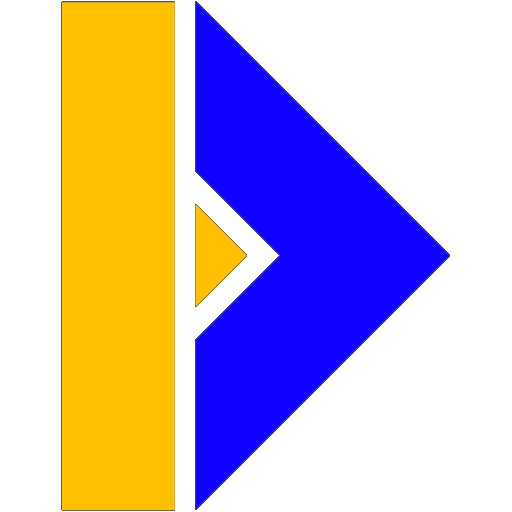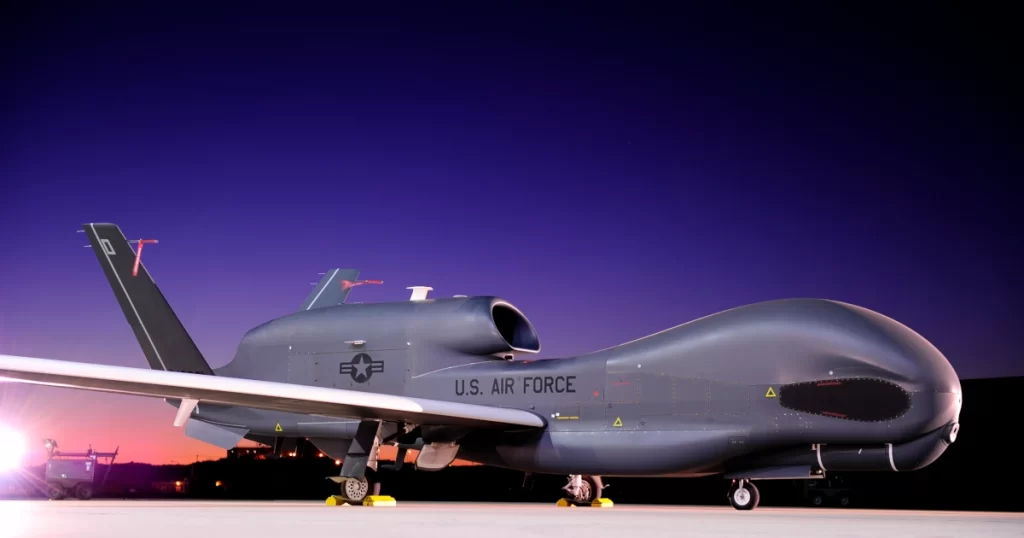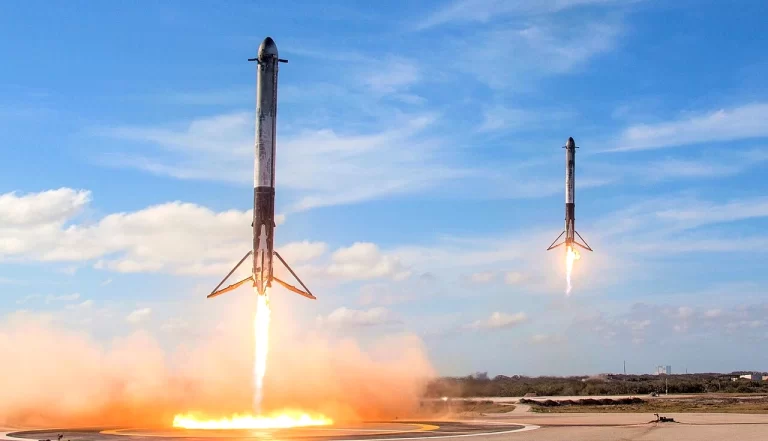Northrop Grumman, a leading global aerospace and defense technology company, has been at the forefront of technological innovations in the defense industry. Among its most notable ventures is its substantial investment in autonomous systems, a critical component in modern military operations. These systems are designed to enhance operational efficiency, reduce risks to human lives, and improve decision-making processes on the battlefield. This case study delves into Northrop Grumman’s investments in autonomous systems for defense, exploring its strategies, key projects, and the broader implications for the defense industry.
Northrop Grumman Company Profile
Northrop Grumman Corporation is one of the world’s largest defense contractors, with a rich history of innovation in aerospace, defense, and cybersecurity solutions. Headquartered in Falls Church, Virginia, the company has been a key player in providing cutting-edge technologies to government and military clients, primarily the U.S. Department of Defense (DoD).
Founded in 1939, Northrop Grumman has grown through strategic mergers and acquisitions, including its 1994 merger with Grumman Aerospace and the acquisition of Orbital ATK in 2018. These acquisitions have expanded the company’s capabilities in autonomous systems, space, missile defense, and cyber solutions.
Core Business Segments
Northrop Grumman operates through four primary business sectors:
- Aeronautics Systems: This sector focuses on manned and unmanned aircraft systems, including the development of autonomous UAVs and advanced ISR platforms.
- Defense Systems: Specializes in defense modernization, precision strike weapons, and autonomous land systems.
- Mission Systems: Focuses on cyber, C4ISR (Command, Control, Communications, Computers, Intelligence, Surveillance, and Reconnaissance), and logistics solutions.
- Space Systems: Dedicated to space exploration, missile defense, and satellite technologies, including autonomous space systems.
Global Reach and Clientele
With over 90,000 employees worldwide and operations in more than 25 countries, Northrop Grumman serves a broad range of customers, including defense, intelligence, and civil government agencies. Key clients include the U.S. Air Force, Navy, and NASA, in addition to allied governments and defense organizations around the globe.
Financial Overview
In 2023, Northrop Grumman reported revenues of approximately $36 billion, with substantial investments in research and development to maintain its leadership in defense innovation. A significant portion of these investments is directed toward autonomous systems, AI, and space technologies, reflecting the company’s strategic priorities.
Northrop Grumman’s Strategic Focus on Autonomous Systems
Northrop Grumman has identified autonomous systems as one of the primary pillars of its growth and innovation strategy. The company’s vision centers around developing sophisticated, unmanned systems that can operate independently or in collaboration with manned systems, enhancing the capabilities of defense forces worldwide.
Defining Autonomous Systems
Autonomous systems refer to technologies capable of performing tasks without direct human intervention. In the defense context, these systems encompass various platforms, including unmanned aerial vehicles (UAVs), autonomous ground vehicles, unmanned maritime systems, and intelligent weapon systems. Northrop Grumman’s investments are aimed at developing autonomous platforms capable of tackling complex and dangerous missions in contested environments.
Autonomous Systems and the Modern Battlefield
The evolving nature of warfare requires enhanced capabilities in intelligence, surveillance, reconnaissance (ISR), and combat operations. Autonomous systems offer solutions that minimize human involvement in hazardous missions, such as surveillance in hostile territories or logistical support in high-risk zones. By integrating artificial intelligence (AI) and machine learning (ML), these systems can quickly process large amounts of data, improving situational awareness and enabling real-time decision-making.
Northrop Grumman’s Key Autonomous Systems Projects
Northrop Grumman has spearheaded several autonomous systems projects aimed at revolutionizing defense capabilities. Below are some of the company’s most noteworthy initiatives:
RQ-4 Global Hawk
One of Northrop Grumman’s flagship autonomous systems, the RQ-4 Global Hawk, is a high-altitude, long-endurance unmanned aerial vehicle (UAV) used primarily for ISR missions. The Global Hawk’s advanced sensors and AI-powered capabilities allow it to gather real-time intelligence over vast areas without requiring human pilots in the sky. Its autonomy in navigation and data collection makes it indispensable in both combat and non-combat missions.
MQ-4C Triton
The MQ-4C Triton is a maritime version of the Global Hawk, specifically designed for naval operations. It provides continuous, real-time surveillance of vast ocean areas and littoral regions. With the ability to cover large distances autonomously, Triton enhances maritime ISR and complements manned systems, giving the U.S. Navy superior situational awareness.
Autonomous Ground Vehicles
Northrop Grumman has also invested in the development of autonomous ground systems designed to support military logistics, reconnaissance, and combat operations. These vehicles are equipped with advanced navigation systems and machine learning algorithms, enabling them to operate in diverse terrains and hostile environments without the need for constant human control.
Unmanned Underwater Vehicles (UUVs)
In the maritime domain, Northrop Grumman has developed unmanned underwater vehicles to support the Navy’s underwater operations. These autonomous submarines are used for mine detection, underwater mapping, and reconnaissance, reducing the risks to human operators in dangerous underwater environments.
Northrop Grumman’s Key Autonomous Systems Project Investments
In 2023, Northrop Grumman continued to expand its capabilities in autonomous systems by focusing on projects that spanned air, ground, and maritime operations. Their investment in the MQ-4C Triton system, designed for maritime surveillance, and the Advanced Battle Management System (ABMS), aimed at improving battlefield communication through AI-driven autonomous platforms, are just two examples of the company’s commitment to pushing the boundaries of defense technologies. These projects, along with the DARKHORSE combat vehicle and Remus 300 UUV, highlight Northrop Grumman’s strategy of integrating AI with autonomy to support future defense needs.
Recent Projects: Cutting-Edge Autonomous Systems Initiatives
Northrop Grumman continues to expand its portfolio of autonomous systems with recent projects that demonstrate its commitment to innovation and strategic defense priorities. These projects highlight the company’s focus on enhancing military capabilities, particularly in unmanned operations and AI-driven technologies.
- DARKHORSE Autonomous Combat Vehicle
One of Northrop Grumman’s recent ventures is the DARKHORSE, an advanced autonomous ground combat vehicle designed for multi-domain operations. This unmanned ground vehicle (UGV) is capable of performing a variety of tasks, from intelligence gathering to direct combat support, in contested environments. With its AI-driven autonomy and advanced sensors, DARKHORSE can operate independently, providing critical support without putting human soldiers in harm’s way. - Advanced Battle Management System (ABMS)
Northrop Grumman is playing a key role in the Advanced Battle Management System (ABMS), a project spearheaded by the U.S. Air Force aimed at developing a next-generation network of interconnected autonomous platforms. ABMS seeks to integrate drones, satellites, and other unmanned systems into a single network, improving battlefield communication and decision-making in real-time. Northrop Grumman’s contributions focus on integrating AI and autonomous systems into the ABMS infrastructure, enabling seamless collaboration between manned and unmanned forces. - Remus 300 Unmanned Underwater Vehicle (UUV)
The Remus 300 is an unmanned underwater vehicle developed by Northrop Grumman for maritime defense operations. It is used for a wide range of tasks, including mine detection, underwater reconnaissance, and mapping. This project is part of Northrop Grumman’s push to advance underwater autonomy, enabling navies to perform complex underwater missions without risking human divers. The Remus 300’s modular design and autonomous navigation capabilities make it a versatile tool for naval operations. - Firebird Intelligence, Surveillance, and Reconnaissance (ISR) Platform
The Firebird is a highly flexible, hybrid aircraft developed by Northrop Grumman for ISR missions. It can operate both as a manned or unmanned platform, providing unparalleled flexibility for defense operations. Equipped with advanced AI-driven ISR capabilities, Firebird can quickly adapt to various missions, whether for long-endurance intelligence gathering or rapid-response combat support. Its unique design allows for rapid payload reconfiguration, making it ideal for multi-mission roles in complex defense environments.
Leveraging AI and Machine Learning in Autonomous Systems
Northrop Grumman’s autonomous systems heavily rely on advancements in artificial intelligence and machine learning. The integration of these technologies allows autonomous systems to continuously improve their performance, adapt to dynamic battlefield conditions, and make complex decisions in real-time.
- Real-Time Data Processing
AI-enabled autonomous systems can process vast amounts of data collected by sensors, cameras, and other inputs, providing a comprehensive understanding of the battlefield environment. This real-time data processing capability enhances situational awareness, allowing defense forces to make informed decisions quickly. - Machine Learning for Predictive Analysis
Machine learning models embedded in autonomous platforms allow for predictive analysis, identifying patterns and trends from historical data to anticipate threats or operational challenges. This predictive capability ensures proactive decision-making, particularly in complex and fast-paced combat scenarios. - AI-Driven Autonomy
Northrop Grumman’s autonomous systems incorporate AI algorithms that enable self-directed navigation, obstacle avoidance, and mission execution. By reducing the need for human intervention, these systems can independently perform tasks such as ISR missions, logistical support, and even targeted strikes with minimal risk to human life.
Collaboration and Partnerships in Autonomous Systems Development
Northrop Grumman recognizes the importance of collaboration in advancing autonomous systems for defense. The company works closely with various defense agencies, research institutions, and tech companies to drive innovation in autonomous platforms.
Partnership with DARPA
Northrop Grumman has collaborated with the Defense Advanced Research Projects Agency (DARPA) on several projects aimed at advancing autonomous systems. These collaborations focus on integrating AI and robotics into defense technologies, accelerating the deployment of next-generation unmanned platforms.
Academic Collaborations
By partnering with universities and research institutions, Northrop Grumman ensures that it remains at the cutting edge of autonomous systems research. These collaborations help the company explore emerging technologies, such as AI and machine learning, and apply them to defense solutions.
Industry Partnerships
Northrop Grumman also partners with other defense contractors and technology companies to leverage their expertise in AI, data analytics, and robotics. These partnerships allow for the pooling of resources and knowledge, resulting in more robust and capable autonomous systems.
Northrop Grumman’s Key Autonomous Contracts and Timelines
In 2023, Northrop Grumman continued its aggressive pursuit of contracts related to autonomous systems, focusing on expanding its portfolio in ISR, maritime surveillance, and AI-driven combat technologies. Key contracts such as the Global Hawk Modernization and Triton Program for the U.S. Navy highlight the company’s commitment to delivering cutting-edge unmanned solutions. Moreover, their partnership with DARPA for AI-based autonomous systems demonstrates Northrop Grumman’s intention to drive forward next-generation combat technologies, positioning itself as a leader in defense innovation.
Competitive Analysis: Northrop Grumman’s Position in the Autonomous Systems Market
The autonomous systems market is highly competitive, with multiple defense contractors and technology companies vying for leadership in this rapidly growing sector. Northrop Grumman faces stiff competition from both U.S.-based and international firms, each investing heavily in autonomous platforms for defense applications.
Key Competitors
- Lockheed Martin: As Northrop Grumman’s primary competitor, Lockheed Martin has made significant strides in autonomous aircraft, missile defense systems, and space technologies. Its autonomous platforms, such as the F-35 fighter jet and various missile systems, integrate AI to enhance battlefield capabilities.
- Boeing Defense, Space & Security: Boeing is another major player in autonomous systems, particularly in the development of unmanned aerial systems (UAS) and autonomous refueling drones. Boeing’s MQ-25 Stingray, an autonomous aerial refueling aircraft, is one of the notable innovations in the space.
- General Dynamics: Known for its advanced ground systems, General Dynamics is heavily invested in autonomous land vehicles and combat systems. Its Stryker Autonomous Vehicle and robotics-driven systems for ground operations are strong contenders in the autonomous defense market.
- BAE Systems: A key competitor in Europe, BAE Systems is making advances in autonomous maritime systems, such as its autonomous underwater drones and ships, as well as autonomous air systems used for intelligence and surveillance missions.
Technological Differentiation
Northrop Grumman’s competitive edge lies in its comprehensive approach to autonomy across multiple domains—air, land, sea, and space. While competitors like Lockheed Martin focus primarily on aircraft, Northrop Grumman’s autonomous platforms encompass not only UAVs but also UUVs (unmanned underwater vehicles) and ground systems, offering a more diverse portfolio.Additionally, Northrop Grumman’s investment in AI and machine learning for defense applications is robust. The integration of AI in real-time data processing, decision-making, and operational autonomy sets its platforms apart, particularly with systems like the RQ-4 Global Hawk and MQ-4C Triton.
Market Share and Leadership
Northrop Grumman is one of the leaders in the U.S. defense market, particularly in autonomous ISR and combat systems. The company’s extensive experience, long-term contracts with the DoD, and successful track record in delivering unmanned systems give it a competitive advantage. However, competition in areas like autonomous space systems, where SpaceX and Blue Origin are emerging players, could shift the market dynamics in the future.
Northrop Grumman’s ability to maintain its leadership in the autonomous systems market will depend on its continued focus on innovation. The company’s strong emphasis on R&D ensures that it remains at the forefront of technological advancements. Its partnerships with DARPA and other leading research institutions enable Northrop Grumman to remain agile and competitive in a fast-evolving industry.
The Future of Autonomous Systems in Defense
The future of autonomous systems in defense looks promising, with significant advancements expected in the coming years. Northrop Grumman’s continued investment in this area signals its commitment to driving innovation and shaping the future of military operations. The company is focused on expanding the autonomy of its systems, making them more intelligent, flexible, and capable of performing increasingly complex tasks.
Integration of Swarming Technologies
One of the most exciting developments in the autonomous systems space is the integration of swarming technologies. Northrop Grumman is working on enabling multiple autonomous systems to operate collaboratively, executing missions as a coordinated swarm. This could revolutionize combat tactics, allowing for more efficient and effective operations.
Enhanced Human-Machine Collaboration
While autonomous systems reduce the need for human intervention, Northrop Grumman is also exploring ways to improve human-machine collaboration. The goal is to develop systems that enhance the decision-making capabilities of human operators while allowing autonomous platforms to handle the more dangerous and routine aspects of military missions.
Ethical Considerations and AI in Defense
As Northrop Grumman continues to develop AI-driven autonomous systems, ethical considerations are becoming increasingly important. The company is actively involved in discussions surrounding the ethical use of AI in defense, particularly concerning the autonomy of lethal weapons systems and ensuring accountability in decision-making processes.
Conclusion
Northrop Grumman’s investment in autonomous systems for defense represents a significant shift in the way military operations are conducted. Through its innovative projects like the Global Hawk, Triton, and UUVs, the company is pushing the boundaries of what is possible in defense technology. By integrating AI and machine learning, Northrop Grumman’s autonomous systems are transforming battlefield operations, offering enhanced capabilities, reduced risks to human life, and a more efficient use of resources. As the defense industry continues to evolve, Northrop Grumman’s leadership in autonomous systems is poised to play a critical role in shaping the future of military operations.
Key Takeaways
- Strategic Investment in Autonomous Systems
Northrop Grumman is heavily investing in autonomous technologies, spanning air, sea, and ground systems, aiming to revolutionize defense operations through enhanced intelligence, surveillance, and reconnaissance (ISR) capabilities. - AI and Machine Learning Integration
By integrating AI and machine learning into its autonomous platforms, Northrop Grumman enables real-time data processing and predictive analysis, improving battlefield decision-making and reducing risks to human personnel. - Leadership in a Competitive Market
Despite stiff competition from industry giants like Lockheed Martin and Boeing, Northrop Grumman remains a leader in the autonomous systems market, thanks to its diverse portfolio and focus on innovation across multiple defense domains. - Collaboration as a Driver of Innovation
Partnerships with DARPA, academic institutions, and other defense contractors ensure that Northrop Grumman stays at the cutting edge of technological advancements in autonomous systems, enhancing its competitive edge in defense technology.




